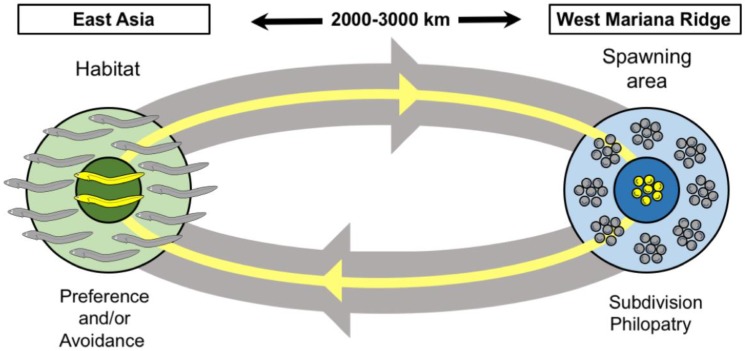Figure 5.
The “reproductive isolation like subset mapping” (RISM) model explaining the generation of the Kuma River Japanese eel population (KMs). Gray eggs and eels indicate the main group of the Japanese eel (MGJE). Yellow eggs and eels indicate those of KM individuals. Thick grey and thin yellow lines indicate the migration routes of the MGJE and KM individuals, respectively. Arrows indicate migration direction. Light green area indicates the MGJE habitat in East Asia. Dark green area shows the estuary Kuma River wetland within the Japanese eel habitat. Light blue area shows the MGJE spawning area in the West Marian Ridge. Dark blue area shows the spawning area subdivision occupied by the KM individuals. Reproductive isolation was achieved by a combination of spawning area subdivision, philopatry, and relative differences in Kuma River environmental (salinity, temperature) preferences between the KM individuals and the MGJE. Consequently, there is a non-panmictic coexistence of the KM individuals and the MGJE, which may be the initial stage of sympatric speciation.

